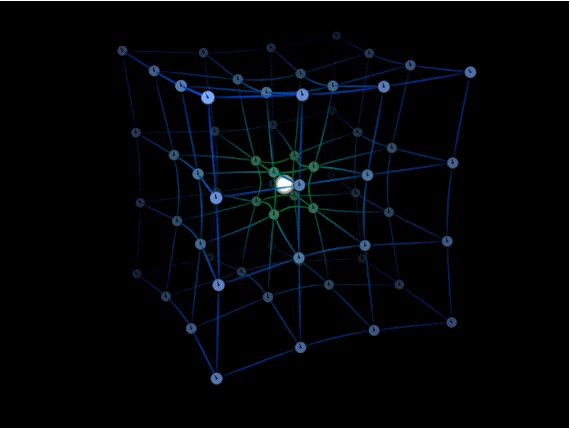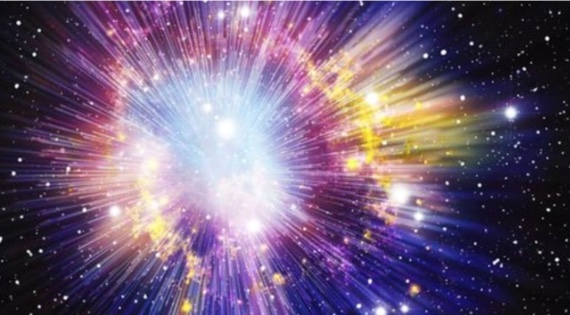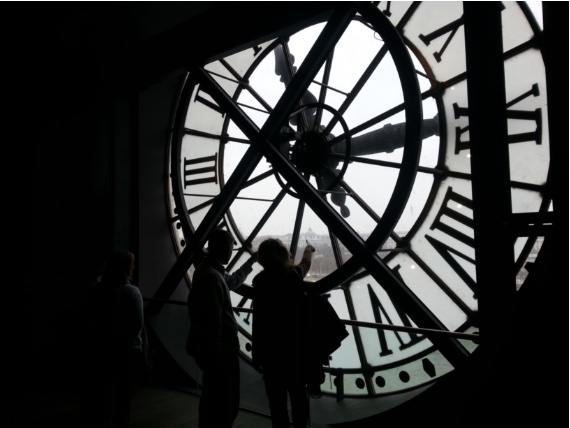For anyone anxiously watching the clock while struggling to finish an exam, or rushing to catch a flight at the airport before the boarding gate closes, the question of whether time really exists may seem like a bad joke. But the truth is that humans have been pondering this question for at least 2,500 years, and so far no one has come up with an answer satisfactory to everyone. Things get even more complicated when physicists try to move towards that much-vaunted “theory of everything” that can encompass subatomic particles as well as big things. What usually happens is that, once scientists have worked out their equations, time is nowhere to be found. And if it’s not part of the fundamental fabric of the universe, how do we know it’s not something we’ve invented to explain what we don’t understand?
Around 500 BC, Heraclitus of Ephesus observed that, if we bathe twice in the same river, neither we nor the river are the same; according to the concept attributed to him by Plato, panta rei, “everything flows.” The philosophy of Heraclitus is based on the passage of time. But around the same time, Parmenides of Elea held a view that has traditionally been considered the opposite: nothing changes, everything remains. Both doctrines have inspired different views of time in Western thought in later centuries. Isaac Newton viewed the universe as an immense, inexorable clock that marked the passage of time as an absolute magnitude, something that existed independently of everything else.
But in the 19th century, the physicist Ludwig Boltzmann wrote: “For the universe, the two directions of time are indistinguishable, just as in space there is no up and down.” Boltzmann’s view departed from time as an absolute in itself, a constant of the natural order of the universe. He implied that there is no objective direction of time, and that we invent it according to our perception, just as we call the direction towards the centre of the earth “down.”
Time as an illusion
The great revolution in our idea of time began with Albert Einstein. In his general relativity he included time as another dimension in the deformable fabric of the universe that explains gravity, and in special relativity time also became elastic, dependent on the position and velocity of the observer, so that the concept of “now” became meaningless. Decades later, in a letter of condolence to the family of his friend Michele Besso, who had died shortly before, Einstein wrote that for physicists “the distinction between past, present and future is only a stubbornly persistent illusion.” This quote by the physicist has often been the subject of discussion between those who interpret it as a mere attempt to bring comfort and those who see a true scientific pronouncement on time as an illusion, even if the context was a simple personal letter. Be that as it may, Einstein’s vision led the philosopher Karl Popper to compare him to a modern Parmenides.

In 1908, while Einstein was thinking deeply about curved time, the philosopher John McTaggart Ellis stirred up a debate that has lasted for more than a century, when he argued for the unreality of time. The advent of quantum mechanics added a new argument: in the world of big things we can still perceive an asymmetry, an “arrow of time,” an expression coined in 1927 by the astrophysicist Arthur Eddington, who verified Einstein’s gravity through observations during an eclipse. This arrow of time is understood in a thermodynamic sense, as the entropy of systems—their measure of disorder—increases in the direction of what we understand as the advance of the clock. But in the world of atoms, the laws of quantum mechanics are detached from time: they work either forwards or backwards, clockwise or counter-clockwise; they have no preferred direction. And just as matter and energy are constructed from the tiny elements that are the object of quantum study, where are the particles of time? Experience tells us that time emerges as we move away from the world of the atom into the world of large objects; but how does it emerge, if it is not formed from smaller units?
The space-time connection
What’s more, in the search for a theory that unifies the two hitherto separate theories of the large and the small, it is often the case that time is not present. An example is seen in Loop Quantum Gravity (LQG) theory; unlike its more popular competitor—string theory—which replaces particles with tiny linear strings in an already formed space-time, LQG constructs the tapestry of the universe from tiny loops of space-time, like pixels on a screen.
In 2018, the theoretical physicist and science populariser Carlo Rovelli, one of the creators and promoters of LQG, published The Order of Time (Penguin Random House), an acclaimed book in which he explained the timeless physics born of this theory. According to Rovelli, time emerges in the thermodynamic context, but it is an illusion born of our incomplete knowledge; it is not something that exists objectively. “Time is a derived concept, it is not something fundamental,” Rovelli summarises to OpenMind. “The arrow of time is nothing more than the entropy increase.” “We certainly have a common intuition about time that is contradicted by clear physical experiments,” he adds.

But if Rovelli and other physicists argue that our understanding of time is illusory, other authors go further by leaving open the possibility that it does not exist at all. This is what philosophers Kristie Miller, Sam Baron and Jonathan Tallant argue in their new book Out of Time: A Philosophical Study of Timelessness (Oxford University Press, 2022).
Denial of the existence of time: science or mysticism?
“We say that time might not exist,” co-author Kristie Miller, co-director of The Centre for Time at the University of Sydney, tells OpenMind. “But the next claim is just that the various approaches to quantum gravity are ones which do not obviously show that there is time that emerges,” she adds. “So, the claim is that for all we have been told so far, it could turn out that there is no time.”
However, Miller and her collaborators provide a way out of this predicament: if time might not exist, we would still have causality, the notion that one thing causes another thing to come after it. And according to the authors, this, not time, could be a fundamental property of the universe. “The idea is that perhaps causation can play some of the roles that we usually take time to play,” says Miller. “It’s a good question whether we would end up with time but by another name! I’m pretty tempted by the idea that if we had anything that was sufficiently time-like, that it can do all the sorts of things that it seems as though time does, this would just be the discovery that that thing is time.”

But Rovelli is not convinced by this argument: “Causality is even less well defined by time,” he argues. For the physicist, there are notions of time and temporality in nature that make sense even without any reference to causality. Indeed, there is also no widespread consensus among physicists on time, which Rovelli says, “means different things in different contexts.” For some physicists, if it can be measured, quantified and defined mathematically, and if there are other variables that depend on it, that is enough to accept its existence. Miller, for her part, argues that this is not enough: “Until there is an explanation that makes us understand how time emerges from a timeless fundamental reality, we think more work is needed; and the book tries to suggest that this may be more difficult than previously thought.”
Some physicists have gone so far as to imply that denying the existence of time, or defining it only as an illusion, is in line with certain current pseudo-scientific or mystical currents that present themselves as a misrepresentation of Einstein’s words. After all, the fact is that the existence of time cannot be falsified, or its non-existence proven. Miller acknowledges that there are pseudosciences that deny time, but she distances herself from these proclamations: “We don’t take a stand on this,” she says.
Is time travel possible?
All of the above opens another interesting door into one of science fiction’s favourite terrains: if time were an illusion, or did not exist, where would that leave the possibility of time travel? Rovelli believes that LQG does not preclude the existence of what he calls “closed time-like trajectories in the universe”, but he thinks it is “extraordinarily unlikely that someone could arrive here remembering things that happened in our future.”

Miller notes that something like what we mean by time travel would be possible as a kind of deviant causality, if “some causal arrows point in different directions than most of them do.” The philosopher posits: “something you do now, getting into the machine, would cause you to exist at a time that, given all the other causal arrows, would count as earlier.” In fact, she adds, there are theories about the direction of time that don’t require all these causal arrows to point in the same direction; it is sufficient that most of them do. And if there are such rogue arrows, then we would have our way to travel in time. However, building the machine would be even more complicated than trying to convince those who have closed the boarding gate on us that the existence of time, in physics and philosophy, is highly disputable.
Javier Yanes
@yanes68
Comments on this publication